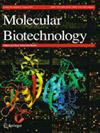摘要
葡萄膜黑色素瘤(UVM)是发生在眼部的第二大常见类型的恶性黑色素瘤,它产生于葡萄膜腔的间质黑色素细胞。本研究旨在为针对紫外线瘤的免疫疗法确定一种高效的生物标志物。首先,研究人员利用癌症基因组图谱(TCGA)数据库中的转录和临床数据,通过免疫和基质评分进行了综合分析,以评估肿瘤微环境中浸润免疫细胞的组成。此外,还利用加权基因共表达网络分析(WGCNA)分析了BCL2相关X、凋亡调节因子(BAX)的表达及其共表达基因网络,以确定相关的基因模块和枢纽基因。免疫组化(IHC)分析证实了 BAX 对免疫浸润的影响。此外,还利用基因表达总库(GEO)的外部数据集对包括BAX在内的枢纽基因进行了生存分析,以证实这些基因在独立患者队列中的预后意义。结合患者的临床特征,我们绘制了一张预测生存结果的提名图。我们的研究发现,BAX的高表达与UVM的严重临床特征和不良预后有关。我们的分析在按 BAX 表达水平分类的差异表达基因与共表达基因模型的交叉点上发现了 12 个中心基因。此外,GEO 数据库还验证了这些中心基因的预后意义。IHC 分析确定了 BAX 表达与免疫浸润之间的显著相关性。该提名图模型显示出强大的预测效率,其一致性指数(C-index)为 0.909(95% CI:0.846-0.971),表明其具有出色的鉴别能力。1年、3年和5年总生存(OS)率的校准曲线证实了提名图的准确性,密切反映了患者的实际结果。最后,决策曲线分析(DCA)显示,该提名图能准确预测大多数患者的 OS,概率范围为 25-95%。我们的研究可能会提供一种新的治疗方案,造福紫杉醇中毒患者。Uveal melanoma (UVM) is the second most common type of malignant melanoma occurring in the eye, which arises from the interstitial melanocytes in the uveal tract. This study aims to identify a highly efficient biomarker for the immunotherapy against UVM. Initially, a comprehensive analysis was conducted using the transcriptional and clinical data from The Cancer Genome Atlas (TCGA) database through the immune and stromal scores to assess the composition of infiltrating immune cells in the tumor microenvironment. Further, the expression of BCL2-Associated X, Apoptosis Regulator (BAX), and its co-expression gene networks were analyzed using the weighted gene co-expression network analysis (WGCNA) to identify relevant gene modules and hub genes. The immunohistochemistry (IHC) analysis was carried out to confirm the influence of BAX on immune infiltration. In addition, the survival analysis on the hub genes, including BAX, was performed using an external dataset from the Gene Expression Omnibus (GEO) to corroborate the prognostic significance of these genes in an independent patient cohort. A nomogram integrating patients' clinical features was developed to predict the survival outcomes. Our investigations revealed that high BAX expression was associated with severe clinical characteristics and poor prognosis in UVM. Our analyses identified 12 hub genes at the intersection of differentially expressed genes categorized by BAX expression levels and a co-expression gene model. Further, the GEO database validated the prognostic significance of these hub genes. The IHC analysis established a significant correlation between BAX expression and immune infiltration. This nomogram model demonstrated robust predictive efficiency with a concordance index (C-index) of 0.909 (95% CI: 0.846-0.971), indicating excellent discriminative ability. The calibration curves for 1-year, 3-year, and 5-year overall survival (OS) rates confirmed the nomogram's accuracy, closely reflecting the actual patient outcomes. Finally, the Decision Curve Analysis (DCA) revealed that this nomogram could accurately predict OS for a majority of patients, covering a probability range of 25-95%. Our research may provide a new therapeutic regimen to benefit the UVM patients.

 求助内容:
求助内容: 应助结果提醒方式:
应助结果提醒方式:


